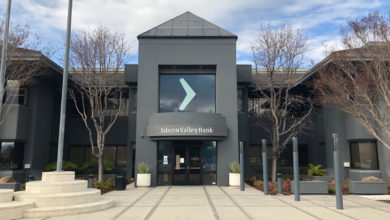May 5, 2018 is the 200th anniversary of the birth of Karl Marx. In honor of this occasion, we are reposting an essay from our “Fundamentals of Marxism” series found on Liberation School. Party for Socialism and Liberation is committed to keeping alive the legacy of Marx, not as an academic endeavor but as a living tool in the class struggle. Originally published in 2004.
Today, there is an enormous economic gap between the rich and the poor. According to the International Labor Organization, “one billion people are unemployed or underemployed” worldwide. Yet, six of the world’s richest people have a combined wealth of $134.6 billion.These six people have more money than nearly everyone else will see in their lifetime.
That is the nature of capitalism.
But what is capitalism? How can a tiny group of people accumulate vast wealth while others cannot pay their bills? How can there be multi-billionaires when people live on the streets?
Owners vs. workers
In all class societies, be it ancient slavery, feudalism or capitalism, wealth is the product of human labor. All of these social systems are based on exploitation. A few own and control the surplus product produced by the labor of the many.
For example, under the slave system in the U.S. before the Civil War, big landowners owned Black workers outright—along with everything they produced. Under the feudal system of medieval Europe, lords owned the land, while serfs turned over any extra produce or goods in exchange for the right to live on the land and grow enough to feed their families.
Capitalism is different from these earlier systems in that the owning class—the capitalists—rule by virtue of owning the means of production, called capital—factories, mines, stores, land, etc. Workers can only live by selling their labor to the capitalists for wages. Without going to work, selling their labor to the bosses, workers would starve.
Modern capitalists accumulate their vast fortunes by legally owning and profiting from the products created by wage workers. The difference between the social systems is the mode of exploitation, along with the relations between the ruling class and the exploited class.
Under capitalism, the capitalist class and the working class are the two main classes. The interests and needs of these classes are not the same.
The capitalist class owns the wealth, while the working class produces everything for society. Most people in the world belong to the working class. Workers may own things such as a car or house, but they do not own capital. Capital is property that produces surplus value by exploiting labor.
The ownership of capital by one class and not the other results in an ever increasing polarization between the capitalists and the workers.
Surplus value and exploitation
Wal-Mart gives a prime example of the great polarization between these two classes. Wal-Mart employs around 1.4 million people in the U.S., and most employees make $7.50 an hour. If every employee worked 8 hours a day for five days a week, Wal-Mart would pay a little over $20 billion each year in wages.
In 2002, Wal-Mart sales totaled $217 billion and their costs were $207 billion (including the wages paid to workers), leaving an additional $10 billion. Where did that extra $10 billion come from? It came from the hard labor of the workers. Instead of going to the workers, it goes into the pockets of Wal-Mart’s owners as profit. A basic principle of economics is that labor produces value.
Wal-Mart, like other companies, claims to work “for the people.” Sam Walton, the founder of Wal-Mart said, “We’re all working together; that’s the secret.” If everyone at Wal-Mart is working together, why don’t the workers benefit from the additional money earned? It is because the workers and the owners are not working together at all.
The total amount of wealth produced by workers for the owners is the cost of their labor—$20 billion plus the extra $10 billion, in this example. This means the workers at Wal-Mart toil the first two-thirds of each day to pay for the cost of their labor. The remaining third of the day, they work to make money for the boss. This unpaid labor creates what is known as surplus value. The money taken from the surplus value goes directly into the owners’ pockets.
Some of that surplus goes to taxes and other expenses. But the big part is pure profit—$7 billion a year, in Wal-Mart’s case.
The capitalists at Wal-Mart, like all capitalists, reap maximum profits while millions are poor and hungry. More than 800 million people around the world suffer from malnutrition because they do not have enough food to eat. That’s not because there is a shortage of food in the world; on the contrary, there is more than enough food produced in the world today to provide for all.
This irrational situation is due to the fact that capitalists organize what they produce not by what is needed, but rather to earn profits. If goods are produced that do not make a profit, they are thrown away or destroyed.
Each capitalist produces to outproduce and outsell the competitors. They each race for an uncertain market, eventually producing more than can be sold at a profit. The unplanned character of capitalist competition leads from economic boom to bust.
Unable to sell off their inventories, the capitalists are forced to close factories. Workers are thrown out of work and so can afford to buy even less, causing more shutdowns in production. These crises in production are known as recessions or depressions, and they are built into the way the capitalist system is organized.
If the amount of food produced or the question of whether or not to produce were no longer bound by the profit-driven capitalist system, overproduction and hunger would not exist.
This dynamic will continue to exist as long as we live under capitalism. There will always be hungry and malnourished people while others throw away food.
Socialism is the answer
People will never have the things they need, such as food or healthcare under capitalism. But there is an alternative: socialism.
Socialism eliminates profit as the motive for production and replaces it with human need. The property of the capitalists, which is really the product of our labor, no longer belongs to them; it belongs to all of society.
Under socialism, the problem of hunger is solved immediately because the productive capacity exists to produce enough food to feed everyone. Society is organized to meet human need—not to make profits for a few.





